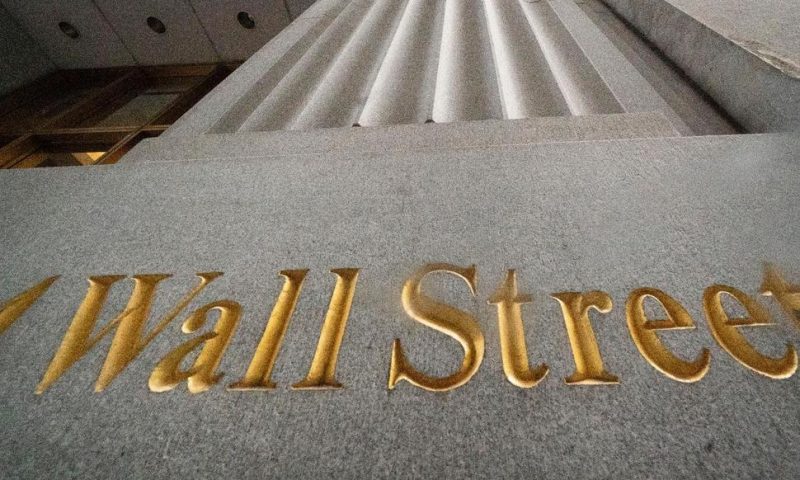Stocks rallied to record highs on Wall Street as traders hoped that new leadership in Washington will mean more support for the economy, which is still reeling from joblessness and business closures because of the pandemic.
Wall Street marked the dawn of President Joe Biden’s administration with stocks rallying to record highs as hopes build that new leadership in Washington will mean more support for the struggling U.S. economy.
The S&P 500 rose 1.4%, topping its previous all-time high set earlier this month. The Dow Jones Industrial Average, Nasdaq composite and Russell 2000 index of smaller companies also notched record highs, powered by gains in technology, communications, health care and most other sectors.
Biden, now the nation’s 46th president, has a flurry of executive actions at the ready. Of primary interest to the stock market, he has also pitched a plan to pump $1.9 trillion more into the struggling economy, hoping to act quickly as his Democratic party takes control of the White House and both houses of Congress.
The hope on Wall Street is that such stimulus will help carry the economy until later this year, when more widespread COVID-19 vaccinations get daily life closer to normal. Such hopes have helped stocks and Treasury yields rise, even as the worsening pandemic digs a deeper hole for the economy. Spiraling coronavirus counts and deaths have more workers applying for unemployment benefits and shoppers feeling less confident.
“Most of Wall Street is assuming that the second half (of 2021) is when we will see pent-up demand start to show up in the economy, and that will push economic indicators higher and will likely cause a ramp up in earnings projections,” said Sam Stovall, chief investment strategist at CFRA.
The S&P 500 rose 52.94 points to 3,851.85. The Dow gained 257.86 points, or 0.8%, to 31,188.38. The Nasdaq climbed 260.07 points, or 2%, to 13,457.25. The Russell 2000 picked up 9.48 points, or 0.4%, to 2,160.62.
A better-than-expected start to earnings reporting season also helped lift the market Wednesday. Analysts came in with low expectations, forecasting the big companies in the S&P 500 will report a fourth straight drop in earnings per share because of the damage from the pandemic. But the vast majority of the earliest reports have managed to top forecasts.
Netflix jumped 16.9% for the S&P 500′s biggest gain after it said it ended last year with more than 200 million subscribers. It also said it made more in revenue during the end of 2020 than analysts expected, though its earnings fell short of forecasts. Business is good enough for the company that it says it likely doesn’t need to borrow anymore to cover its day-to-day operations.
The S&P 500’s gain was the best on any Inauguration Day since the start of Ronald Reagan’s second term, according to LPL Financial. Biden’s predecessor, Donald Trump, often pointed to the stock market’s level as validation of his work — and did so again Wednesday in the final hours of his presidency.
Trump’s preferred measure is often the Dow Jones Industrial Average, even though the S&P 500 is much more important to most workers’ 401(k) accounts. Under Trump, the Dow had an a annualized return of 11.8% from his inauguration until his last day in office, according to Ryan Detrick, chief market strategist for LPL Financial. That’s better than any Republican president since Calvin Coolidge during the roaring 1920s, but it’s not as good as the returns for Bill Clinton or Barack Obama.
Trump preferred to take credit for the stock market’s gains, starting with his election in November 2016. The market got a “Trump bump” back then on anticipation of lower tax rates, less regulation on companies and faster economic growth. Much of that did come to fruition, but the COVID-19 pandemic and the government’s response to it upended everything in 2020.
Gains for stocks have also been accelerating since Biden’s election on enthusiasm about COVID-19 vaccines and hopes that he and Congress can deliver more stimulus for the economy. The bump for stocks between the most recent Election Day and Biden’s inauguration was 14.3%, bigger than the 4.8% boost for the market before Trump’s inauguration.
Stovall noted that since World War II, the S&P 500 has risen an average of 3.5% in the first 100 days of a Democratic president’s administration, versus an average gain of 0.5% when a Republican was in the White House.
Janet Yellen, Biden’s nominee to be Treasury secretary, told the Senate Finance Committee during her confirmation hearing on Tuesday that the incoming administration would focus on winning quick passage of its $1.9 trillion plan.
“More must be done,” Yellen said. “Without further action, we risk a longer, more painful recession now — and long-term scarring of the economy later.”
Analysts have been expressing concerns about pricey stock values heading into the latest round of corporate earnings, but they look more reasonable amid the backdrop of historically low interest rates, said Solita Marcelli, chief investment officer, Americas, at UBS Global Wealth Management. The low rates, along with new stimulus and the continued rollout of vaccines, will likely help bolster markets and the recovery.
“We think that global growth is going to continue to pick up,” she said.
Companies will need to meet the market’s expectations — including for a huge rebound in profit growth through 2021 — to validate the big runs for their stock prices during 2020, even as their profits plummeted. Stocks of several companies slipped on Wednesday, even though they reported stronger profits than expected. Procter & Gamble fell 1%, for example.
The yield on the 10-year Treasury rose to 1.09% from 1.07% late Tuesday.

